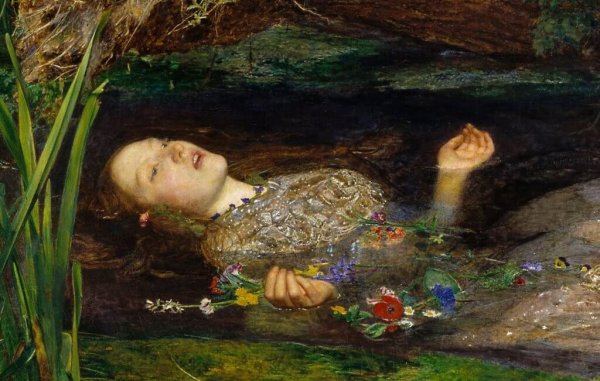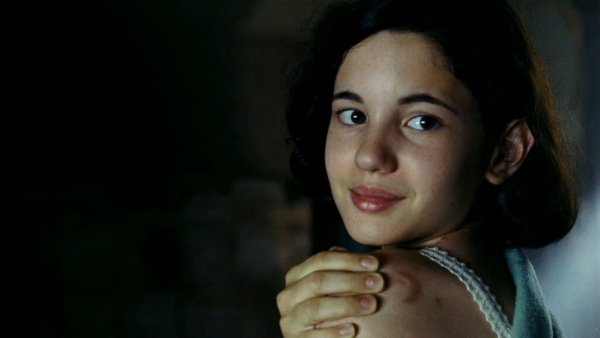Pan's Labyrinth: When Disobedience is a Duty

Pan’s Labyrinth (2006), according to many people, is filmmaker’s Guillermo del Toro best work. This film represents how much he loves fantasy. The movie was really successful. It won numerous awards, including three Oscars: Best Cinematography, Best Production Design, and Best Makeup and Hairstyling.
The movie takes place in one of the saddest times in Spanish history: 1944, the post-Spanish Civil War era. There was a lot of hunger and famine during this time. Thus, it was difficult to imagine, make up, or believe in fairy tales. International isolation, submission to a single ideology (fascism), and misery ruled the daily lives of a good portion of the Spanish population.
Pan’s Labyrinth presents two stories that end up blending together. The fact that the stories are occurring simultaneously is clear from the beginning. While an off-screen narrator tells us about a princess that lived long ago in the underworld, we read some subtitles that place us in postwar Spain. At the same time, we hear a melody that makes us think of the purest of fantasies.
Who is Ofelia?
Ofelia’s the nexus between the two stories. From the harshest of realities, submission to a regime, and the resistance of the guerrillas, Pan’s Labyrinth transports us to this little girl’s most innocent fantasies.
Del Toro manages to mesmerize us with his aesthetic perception and underworld. In this movie, there’s a lot of fantasy and reality, fairy tales and misery, but, above all, disobedience.
Why Ofelia?
The name “Ofelia” immediately brings Shakespeare to mind – specifically Hamlet. In Hamlet, Ophelia is Polonius’ daughter and Laertes’ sister. She’s the fiancé of Prince Hamlet. Ophelia goes crazy after her father’s death because Hamlet murdered him accidentally. Her madness turns her into a childish, innocent, and tragic character.

Ophelia’s death, which is never shown on stage, is relayed by Gertrude, Hamlet’s mother. Many critics consider it one of the most poetic deaths of all time. Ophelia is a woman destroyed by love.
She’s inspired countless romantic paintings because she represents femininity, innocence, love, and death. The tale of her death is almost magical.
Shakespeare’s Ophelia seems submissive and obedient in the world of men. However, when she loses her mind, this submission begins to vanish. We associate the image of Ophelia’s death with something mystical.
The name choices in Pan’s Labyrinth aren’t coincidental. Rather, del Toro chose those names so the viewers would think about Shakespeare’s character. Similarly, we can see certain similarities between Carmen, Ofelia’s mother, and Queen Gertrude. They’re both widows who marry villains. Carmen married Captain Vidal, a soldier. He’s undertaking operations with the goal of destroying all traces of the Republican guerrillas.
Femininity in Pan’s Labyrinth
In Pan’s Labyrinth, women don’t have very favorable positions. Carmen represents the values of traditional women. She submits to men. Mercedes, the household employee at the service of Vidal, challenges these values. Although she appears to be loyal to the captain, the truth is that she’s actually trying to help the guerrillas behind everyone else’s back. Ofelia lives a story that’s parallel to Mercedes’. She’s the heroine of her own story, as she’s in charge of bringing prosperity to the underworld.
Del Toro tried to portray patriarchy as something negative. In doing so, he elevated femininity. In the underworld, there’s no sun. Only the moon shines there. This symbol is full of feminine connotations due to its relation to the menstrual cycle and maternity. In the human world, on the other hand, the sun blinds the princess, making her forget her past. The sun represents masculinity and it has negative connotations.
Mandrake root is also a prominent symbol in the movie. This is a plant with roots that strongly resemble a human figure. Ofelia uses the mandrake root to help her mother through childbirth. She places it in a bowl with milk, representing maternity.
Captain Vidal is the great villain of this story, embodying all of the patriarchal values. Ofelia represents his opposition. There are two stories in two worlds. In this sense, the underworld represents a girl’s innocence and femininity. The real world, on the other hand, is hostile. It’s where one can find the pain of war. This real world is associated with masculinity.

Symbolism
During the beginning of the agricultural period of human history, some tribes, such as the Bushmen, saw the underworld as a place linked to the transition between life and death. In other words, it was magical. Many of their stories talk about girls who go to the underworld and experience things that turn them into women. They lose their innocence and change.
In the underworld, it’s common for animal characters with human characteristics to appear. There are also challenges, temptations, and usually a guide who isn’t always completely trustworthy. These stories are didactical and parabolic. We can see all of this in Pan’s Labyrinth.
The faun represents natural things. He’s a link between the two worlds. But he’s not a completely trustworthy character either. The labyrinth is a search for the truth but it also represents danger. The tree and blood are associated with life, and the Pale Man represents oppression and power from the real world. Time seems to be linked to Vidal, as he’s always wanting to control his clock. We can associate this to the god Chronos.
The number three appears constantly in the movie (Ofelia’s three challenges, three fairies, etc.). This number represented divinity in classical mythology. In Christianity, it’s associated with the Holy Trinity. This is how del Toro constructs a universe that’s perfect and divine.
The movie’s lesson

As in all myths, there’s a lesson to be learned in Pan’s Labyrinth. Del Toro wanted to create a reality where there was only one line of thinking. It’s a reality where disobedience becomes a duty.
This is where characters such as Mercedes, the doctor, and the guerrillas play their role. Despite the oppression, they decide to disobey. Disobedience has two sides. It leads to mistakes, such as when Ofelia falls into the temptation of tasting one of the fruits at the Pale Man’s table, but it also leads to good things when she disobeys the fairies.
The characters represent a reality. However, there are no neutral characters: they’re all either good or bad. Del Toro takes a completely subjective stance. He’s not unbiased. On the other hand, he’s clearly on the resistance’s side, supporting the guerrillas and all of the characters who disobey.
When the movie ends, we’re left without a final explanation. Was Ofelia’s adventure real or was it a product of her imagination?
“But Captain, to obey – just like that – for obedience’s sake… without questioning… That’s something only people like you do.”
–Pan’s Labyrinth–
All cited sources were thoroughly reviewed by our team to ensure their quality, reliability, currency, and validity. The bibliography of this article was considered reliable and of academic or scientific accuracy.
Schein, C., & Gray, K. (2015). The eyes are the window to the uncanny valley: Mind perception, autism and missing souls. Interaction Studies. http://doi.org/10.1075/is.16.2.02sch
This text is provided for informational purposes only and does not replace consultation with a professional. If in doubt, consult your specialist.








